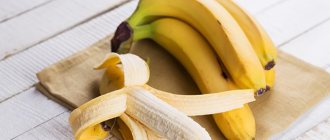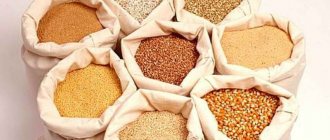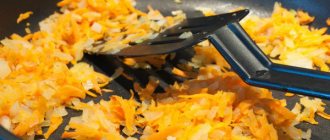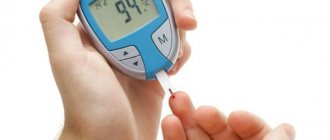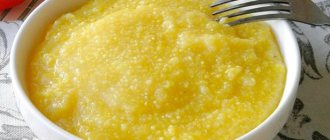Tips for reducing sugar levels
Reducing sugar levels in diabetes mellitus can be achieved through a combination of physical activity, medication and a balanced diet. This balance will help:
- Maintain blood glucose, blood pressure, and cholesterol levels within target ranges;
- lose weight or stay at a healthy weight;
- prevent the development of complications;
- maintain good health and energy 1.
There are general rules for creating a diet to control sugar content:
- Plate rule. Take a plate with a diameter of 23 cm and mentally divide it into 4 equal parts. Half of it should be vegetables (except potatoes, peas and corn), a quarter should be lean proteins, and a quarter should be grains or other starchy foods1
- Minimizing sweetened products: sugary drinks are especially dangerous - lemonade, tea with sugar, industrial fruit juices2
- It is better to use fresh fruits and vegetables as snacks.
- Steam, stew, bake food in its own juice, without adding oil, as it increases the total calorie content3
Table No. 9
Diet No. 9, specially developed for diabetics, is widely used in inpatient treatment of such patients and should be followed at home. It was developed by the Soviet scientist M. Pevzner.
The diet for diabetics includes daily intake of up to:
- 500 ml of fermented milk products, 200 g of low-fat cottage cheese;
- 100 gr. mushrooms;
- 300 gr. fish or meat;
- 80 gr. vegetables;
- 300 gr. fruit;
- 1 glass of natural fruit juice;
- 100-200 gr. rye, wheat mixed with rye flour, bran bread or 200 grams of potatoes, cereals (ready-made);
- 40-60 gr. fat
Main dishes:
- Meat, poultry: veal, rabbit, turkey, chicken, boiled, chopped, stewed.
- Soups: cabbage soup, vegetable soup, borscht, beetroot soup, meat and vegetable okroshka, light meat or fish broth, mushroom broth with vegetables and cereals.
- Appetizers: vinaigrette, mixed fresh vegetables, vegetable caviar, salt-soaked herring, jellied dietary meat and fish, seafood salad with butter, unsalted cheese.
- Fish: low-fat seafood and fish (pike perch, pike, cod, navaga) boiled, steamed, stewed, baked in its own juice.
- Drinks: coffee, weak tea, still mineral water, vegetable and fruit juice, rose hip decoction (without sugar).
- Sweets: desserts made from fresh fruits, berries, fruit jelly without sugar, berry mousses, marmalade and jam without sugar.
- Egg dishes: white omelet, soft-boiled eggs, in dishes.
The difference between diets for type 1 and type 2 diabetes
In type I diabetes, the diet may have the usual calorie content typical for people of similar height and weight. The diet is supportive in nature and is clearly related to how much insulin a person living with diabetes consumes.
Type II diabetes is often accompanied by increased body weight, arterial hypertension, hypercholesterolemia and metabolic syndrome. Therefore, the diet is aimed primarily at reducing body weight. This is manifested in reduced caloric content of food, a decrease in the amount of fat and easily digestible carbohydrates in the diet.
But there are also common points: both groups of people require a complete, balanced diet of proteins, fats and carbohydrates, as well as vitamins, liquids and minerals 2.3.
More information about dairy products
Dairy and fermented milk products for diabetes should be chosen based on their fat content, calorie content and amount of carbohydrates. Kefir or fruit-filled yoghurt tend to contain too much sugar and should be avoided. The optimal dairy menu is:
| Name | Squirrels | Fats | Carbohydrates | Calorie content |
| Milk | 3,2 | 3,2 | 4,8 | 64 |
| Kefir | 3,4 | 2,5 | 4,7 | 50 |
| Low-fat sour cream | from 2.0 to 2.6 | 10–15 | About 3 | 147–158 |
| Acidophilus | 2,7 | 3,2 | 3,8 | 56 |
| Natural yogurt | up to 4.5 | 2,5 | from 6 to 9 | from 60 to 70 |
| Curdled milk | 3,0 | 2,5 | 4,2 | 53 |
| Low-fat cottage cheese | 18 | 1,8 | 3,3 | 101 |
| Low-fat cottage cheese | 17 | 0 | 1,6 | 82 |
| Light cheese | 28 | 15 | 0 | 250 |
| Adyghe cheese | 16 | 18 | 0 | 283 |
Ryazhenka (2.5% fat content), whey, and low-fat curd cheese are allowed in the menu.
How to reduce the risk of complications with type 1 diabetes
Rules to follow when creating menus 2.3:
- People can consume proteins and fats without restrictions (provided they have normal body weight and take into account calorie content). If you are overweight, it is recommended to limit the fat content in your diet.
- Most vegetables can be eaten with virtually no restrictions. Without counting your sugar levels, you can eat green leafy vegetables, zucchini, peppers, cabbage, and legumes, provided they are consumed in moderation (about 200 g per meal).
- Carbohydrates, which are found in grains (bread), fruits, some vegetables (potatoes, corn), milk and dairy products, and sugar, need to be taken into account. The system of bread units helps you count carbohydrates.
1 more menu option for the week
The menu for the week, despite the skepticism of many people who have just embarked on the path of dietary nutrition, can be very tasty and varied, the main thing is not to make food a priority in life, because it is not the only thing that a person lives by.
Monday:
- The morning begins with milk oatmeal (200 g), a piece of bran bread and a glass of unsweetened black tea.
- Before lunch, have a snack with an apple and drink a glass of tea without sugar.
- For lunch, it is enough to eat a portion of borscht cooked in meat broth, a salad of kohlrabi and apples (100 g), a slice of whole grain bread and wash it all down with a lingonberry drink with a sweetener.
- They have an afternoon snack of lazy dumplings (100 g) and unsweetened rosehip broth.
- Dinner consists of cabbage and meat cutlets (200 g), one soft-boiled chicken egg, rye bread and herbal tea without sweeteners.
- Shortly before bed, drink a glass of fermented baked milk.
Tuesday:
- In the morning, eat a portion of pearl barley porridge (250 g) with the addition of butter (5 g), rye bread and tea with sweetener.
- Next, drink a glass of compote (but not from sweet dried fruits).
- They have lunch with vegetable soup, a salad of fresh vegetables - cucumbers or tomatoes (100 g), baked fish (70 g), rye bread and unsweetened tea.
- For an afternoon snack - stewed eggplants (150 g), tea without sugar.
- For dinner they prepare cabbage schnitzel (200 g), a piece of wheat bread made from 2nd grade flour, and unsweetened cranberry juice.
- For the second dinner - yogurt (homemade or purchased, but without fillers).
Wednesday:
- Have breakfast with cottage cheese (150 g), adding a little dried apricots and prunes, buckwheat porridge (100 g), a slice of bran bread and tea without sugar.
- For lunch, just drink homemade jelly without sugar.
- They have lunch with chicken broth with herbs, stewed cabbage with pieces of lean meat (100 g), whole grain bread and wash down with still mineral water.
- For an afternoon snack they snack on an apple.
- Dinner includes cauliflower soufflé (200 g), steamed meatballs (100 g), rye bread and blackcurrant compote (no sugar).
- At night - kefir.
Thursday:
- Breakfast is a vegetable salad with pieces of chicken (150 g), bread with bran and a slice of cheese, and herbal tea.
- For second breakfast - grapefruit.
- At lunch, fish soup, vegetable stew (150 g), whole grain bread, dried fruit compote (but not sweet ones, such as dried apricots, apples and pears) are placed on the table.
- Have an afternoon snack with fruit salad (150 g) and tea without sugar.
- For dinner, fish cutlets (100 g), one egg, rye bread, sweet tea (with sweetener).
- A glass of low-fat milk.
Friday:
- For breakfast, prepare a protein omelet (150 g), rye bread with 2 slices of cheese, and a coffee drink (chicory) with a sweetener.
- For lunch - stewed vegetables (150 g).
- For lunch, noodle soup is served (spaghetti made from wholemeal flour is used), vegetable caviar (100 g), meat goulash (70 g), rye bread and green tea without sugar.
- For an afternoon snack - a salad of permitted fresh vegetables (100 g) and unsweetened tea.
- Dinner is pumpkin porridge (100 g) without adding rice, fresh cabbage (100 g), lingonberry juice (with added sweetener).
- Before bed - fermented baked milk.
Saturday:
- The morning meal begins with a salad of fresh carrots and white cabbage (100 g), a piece of boiled fish (150 g), rye bread and unsweetened tea.
- For lunch - an apple and compote without sugar.
- They have lunch with vegetable borscht, stewed vegetables (100 g) with pieces of boiled chicken (70 g), whole grain bread and sweet tea (a sweetener is added).
- For afternoon snack they eat one orange.
- Have dinner with cottage cheese casserole (150 g) and unsweetened tea.
- Drink kefir at night.
Sunday:
- Sunday breakfast consists of Jerusalem artichoke salad with apple (100 g), curd soufflé (150 g), savory biscuits (50 g), unsweetened green tea.
- One glass of jelly with sweetener is enough for second breakfast.
- For lunch - bean soup, barley with chicken (150 g), cranberry juice with added sweetener.
- For an afternoon snack, fruit salad flavored with natural yoghurt (150 g) and unsweetened tea are served.
- For dinner - pearl barley porridge (200 g), eggplant caviar (100 g), rye bread, sweet tea (with sweetener).
- For the second dinner - yogurt (not sweet).
You can experiment, change the days of the week and the dishes.
Bread unit system
One bread unit is the amount of any product that contains from 10 to 12 grams of carbohydrates. This is exactly how much is contained in one piece of bread, which is why the units are called bread units (XE). You can find out their content in a particular product from special tables 2.
The bread unit system helps determine the dose of short-acting insulin, which is administered before meals. To do this, you need to measure your glucose level and count how many units the portion you plan to eat contains. According to recommendations, one serving should contain no more than 8 XE. Based on these data, the required dose of insulin 2.4 is calculated.
UZ "Mogilev City Emergency Hospital"
This section is quite complex. However, it is necessary in order to lead a freer lifestyle and achieve diabetes compensation. It will be difficult at first, but then it will become a habit and will be done automatically. We all learned to read syllables, and no one got behind the wheel of a car and immediately drove off.
There are 2 main ways to maintain compensation for diabetes:
1) practically free nutrition (this requires frequent measurements of glycemic levels, accurate counting of carbohydrates in food and the ability to independently adjust the insulin dose);
2) a fixed regimen of insulin therapy (recommendations in hospital discharge notes are based on this approach, and there should be a fixed diet with the same amount of carbohydrates and the same level of physical activity).
In both cases, it is necessary to be able to count food correctly. The first path is more difficult, but it is necessary for young active people. The second way is more suitable for those who lead a measured lifestyle, for example, for older people. With the second way, you can create several menu options and stick to it.
A. Calculation of carbohydrates.
Insulin is necessary for the absorption of carbohydrates.
To compensate for carbohydrates with insulin, you need to clearly determine their amount. Those. For a certain amount of carbohydrates, a certain amount of insulin must be injected. This ratio is individual for each person. If you adhere to a constant insulin therapy regimen and do not change your insulin doses yourself, then you need to constantly consume the same amount of carbohydrates. If you want to adhere to a more liberal diet, you need to be able to count carbohydrates and calculate the dose of insulin for them.
The amount of carbohydrates can be determined in grams or bread units.
The concept of “bread unit” (XU) was introduced for the convenience of calculations. 1 XE = 10-12 grams of carbohydrates. For convenience, it is better to take 1 XE of carbohydrates.
To find out the amount of XE, you need to divide the amount of carbohydrates by 10 (if you count 10 g of carbohydrates in 1 XE).
1 XE on average increases the level by 2-2.8 mmol/l.
For example, 100 g of cookies contains 70 g of carbohydrates, which is 7 XE. If you eat 100 g of cookies, in the absence of insulin in the body, glucose can increase by 14-19 mmol. But these numbers are individual.
So-called diabetic products often contain alcohols as sweeteners (isomalt, sorbitol). They do not increase blood glucose, so the amount of alcohols must be excluded from the total amount of carbohydrates.
For example, 100 g of cookies contains 70 g of carbohydrates, including 20 g of sorbitol. So 70-20=50/10=5 XE.
In the photo above, 100 g of product contains 15 g of carbohydrates (Total Carbohydrate), of which 15 are sugar alcohols (Sugar Alcohol). This product will not increase blood glucose levels.
There is no need to subtract fructose! Fructose increases blood glucose to the same extent as regular sugar.
In the presence of diabetes, 2 problems arise when calculating XE:
- Determine how much XE is contained in this particular product that you are now going to eat (not in 100 g, but in this exact amount of the product that you want to eat, for example, in the porridge that you put on your plate and are going to eat).
- How much food should I eat for the required amount of XE (for example, in the morning I eat 3 XE, but I don’t want porridge, I want potatoes).
In principle, this is 1 task, but from different sides.
- Determination of the amount of XE in a product
The amount of XE can be determined approximately (porridge by spoons, fruit by cups, fruit by the piece), or it can (and should) be more accurately determined by weight.
A rough estimate is taught in many diabetes schools. Why? – Because many patients consider counting with spoons extremely burdensome. But, at least at first, it’s better to weigh your food in order to get used to determining portion sizes by eye. It's not that difficult to install kitchen scales in the kitchen.
How to determine how much XE is contained in a given amount of food by weight:
- find out how many carbohydrates are in 100 g of the product (on the packaging - see the nutritional value of the product - carbohydrates);
- Divide the amount of carbohydrates by 1000 and multiply by the weight of the product (if we count in carbohydrates, then we divide not by 1000, but by 100).
CARBOHYDRATE CONTENT in 100 g x WEIGHT OF FOOD (in grams)/1000
For example, we find on the Internet the nutritional value of potatoes - 17 g of carbohydrates per 100 g. We weigh the potatoes that we want to eat, we get 200 g. 17/1000 * 200 = 2.4 XE (if we count in carbohydrates, then we divide not by 1000, but per 100: 17/100*200 = 24 g carbohydrates).
Vegetables must be weighed before cooking! (During cooking, the weight of the product changes, but the carbohydrates remain.) Approximately, 1 medium potato weighs 60 g, 17/1000*60 = 1 XE. Those. 1 medium potato is approximately 1 XE. But it’s better to weigh the potatoes to get an idea of what 60 g is.
It is correct to weigh dry cereals and pasta, cook and weigh the finished porridge. The amount of XE of dry cereal included in the porridge is divided by the weight of the finished porridge and the amount of XE in your specific porridge is obtained. The porridge may turn out different (in 100 g of viscous porridge there will be less XE than in 100 g of crumbly porridge).
Let's look at buckwheat porridge.
Let's take a cut glass of buckwheat, this is 170 g of dry cereal. In 100 g - 57 g of carbohydrates. 57/1000*170= 9.69 XE. We weighed the finished porridge and got 570 g.
9.69 XE/570*100= 1.7 XE in 100 g of porridge.
If the porridge was cooked in milk, one must take into account the carbohydrates contained in the milk. For example, instead of water, 300 ml of milk was added to the above porridge (100 ml - 0.47 XE, 300 - 1.41 XE). 9.69+1.41=11 XE/570*100=1.9 XE in 100 g of porridge.
Pancakes, pies, etc. are baked in the same way. The amount of XE of all products included in the pie (sugar, flour, milk) is counted. Weigh the whole pie. The amount of XE dry products is divided by the weight of the pie, the amount of XE in 1 gram is obtained, multiplied by 100 - per 100 g.
It's worth doing this at least a few times. Then you will be convinced that a small piece of pie will carry 6-7 XE.
- Calculation of the amount of product for the required amount of XE.
To do this, you need to divide 1000 by the amount of carbohydrates per 100 g or 100 divided by the amount of XE per 100 g.
For example, in 100 g of porridge there are 17 g of carbohydrates, 1000/17 = 58 g of porridge per 1 XE.
In the future, such calculations will not be necessary. It’s convenient to develop XE tables for your menu and put them in the kitchen until the calculations become automatic. You can take Rustem's table as a basis.
How much XE should you eat per day?
| Normal body weight Hard physical labor 25-30 XE Moderate physical labor 20-22 “Sedentary” work 16-18 Sedentary lifestyle 12-15 | Overweight or obesity Hard physical labor 20-25 XE Moderate physical labor 15-17 "Sedentary" work 11-16 Sedentary lifestyle - at least 10 |
Body weight deficiency – 25-30 XE per day. Within each category, men use toward the upper end of the range, and women toward the lower end.
It is not recommended to consume more than 7 XE per main meal.
How can you make your life easier? At first, write down your results. We cooked porridge and wrote it down.
| Food | Carbohydrates per 100 g | Weight per 1 XE |
| Hercules porridge (80 g flakes, 500 milk) | 14,5 | 70 |
| Hercules porridge (100 g flakes, 500 milk) | 15,7 | 64 |
| Hercules porridge (80 g flakes, 500 water) | 9,2 | 109 |
Such a sign can be made for all products and hung on the refrigerator. In the future, everything will work out automatically.
At first, you need to keep some formulas on hand:
- Calculation of carbohydrate content in 100 grams of product (if we prepare food from several ingredients containing carbohydrates)
The amount of all carbohydrates that the product contains/total weight of the product*100
- Calculation of XE in the product
CARBOHYDRATE CONTENT in 100 g x WEIGHT OF FOOD (in grams)/1000
- Calculation of the amount of product for the required amount of XE.
1000/ amount of carbohydrates per 100 g.
B. Glycemic index
Foods with different glycemic indexes have different effects on blood sugar over time (whether they raise glucose levels quickly or slowly). The higher the glycemic index, the faster your blood glucose will increase (such foods should be excluded from the diet, but they are good to eat during hypoglycemia).
Fatty foods increase glucose more slowly because fats inhibit the absorption of carbohydrates (fried potatoes will increase glucose less than mashed potatoes; but mashed potatoes can be slowed down with oil).
Liquid foods (especially warm foods) will increase blood glucose faster.
The absorption rate is also affected by:
- degree of processing of the product (the finer, the faster);
- speed of food intake;
- food temperature;
- Is food washed down?
The glycemic index also needs to be taken into account in order to know which foods are best to eat at what time of day. To avoid high blood glucose levels, the action profile of dietary insulin must match the absorption profile of carbohydrates from food. For example, if carbohydrates are absorbed before insulin begins to act, we will get high glucose levels. If later, we can get hypoglycemia.
Depending on the time, insulin acts differently in the body. In the morning, insulin unfolds slowly; to avoid a high food peak, it is necessary to eat foods with a low GI. At lunchtime, insulin works faster - here it is important to combine foods with high and low GI. In the evening, insulin works fastest - foods with a higher GI are suitable.
Approximate list of products depending on meals
| Breakfast | Buckwheat, oatmeal (not Hercules!), barley porridge, pancakes, dumplings, croutons, omelet, potato pancakes, zucchini pancakes, pasta, cottage cheese. |
| Dinner | Soup, buckwheat, rice, pilaf, boiled, fried potatoes, mashed potatoes, dumplings, potato babka, cabbage rolls, pasta, beans, bread. Vegetable salads will help slow down the absorption of food; they can regulate the pause and/or high blood sugar before meals. |
| Dinner | Rice, boiled potatoes, mashed potatoes, cabbage rolls, millet, corn porridge. Protein – up to 100 grams, so as not to take it into account when selecting the insulin dose |
| Snacks | Fruits, cookies, yoghurts. |
If you use ultra-short insulin analogues, then fruits should be included in the main meal (possibly with a short pause after the main meal).
B. Meal frequency.
Depends on the type of insulin. With genetically engineered insulins (monoinsulin, actrapid, humulin, gensulin), snacks are usually necessary at the peak of insulin action, i.e. usually 2 hours after injection).
On analogues (apidra, novorapid), snacks are not needed.
Is it possible to eat extra food when you want and inject extra insulin on it? In principle, it’s possible, but it’s better not to do this until you learn how to compensate, because profiles of different doses will be layered on top of each other. Before this, it is better not to administer a new dose until the previous dose of insulin has been completed (for genetically engineered insulins - 5 hours, for analogues - 4 hours).
D. Pause between insulin administration and food intake.
In addition to the GI of foods, the exposure time between the injection of short-acting insulin and food intake (pause) plays a huge role. Selected individually. The longest break is usually for breakfast. Insulin analogues are administered without a pause or after meals.
More details about the pause are written in the section “Selection of doses of short-term insulin”.
D. Protein-fat units
Proteins and fats do not contain carbohydrates, but after consuming them, carbohydrates (glucose) are produced through biochemical reactions already inside the body and blood glucose can increase. The effect of proteins and fats on blood glucose is very individual and differs from person to person. For some they increase blood glucose, for others they do not. This can only be determined experimentally by measuring glucose after various meals. Very roughly, 100 g of proteins can be equated to one XE.
In any case, the effect of proteins on SC will be much lower than the effect of carbohydrates. At the same time, proteins and fats increase blood glucose slowly and begin to “climb out” after a few hours.
To determine how proteins affect your blood glucose levels, you need to measure your blood glucose 3-4 hours after eating a protein meal (for example, if you ate a lot of meat without carbohydrates, measure your blood glucose level 3-4 hours later).
Diabetes mellitus type 2: nutrition principles
The diet for type 2 diabetes mellitus depends on body weight: with normal weight, the number of calories should correspond to expenses, with increased weight, it should be lower than them (low-calorie diet, hypocalorie diet).
Basic principles of nutrition for type 2 diabetes 3-6:
- Food should be rich in fiber, which inhibits the absorption of sugar, preventing a sharp increase in blood glucose levels. This is achieved due to the high content of vegetables in the diet. On average, the level of fiber in the daily menu should be from 20 to 40 grams.
- When preparing food, it is better to keep cooking to a minimum. It is important to remember that when grinding or heat processing carbohydrate-containing products, glucose is absorbed much faster.
- Sugar and products containing it, including tea and coffee with sugar, should be limited as much as possible.
- Sweeteners can be eaten in moderation, taking into account calorie content. Non-caloric sweeteners saccharin and aspartame can be consumed as needed. The so-called sugar analogues xylitol, sorbitol, and fructose are rich in calories, so they are not recommended for overweight.
- Alcohol is harmful to health, including diabetes. It is high in calories—1 gram of pure alcohol contains 7 kcal—and may contribute to weight gain and poor diabetes control.
Products to avoid
Foods that do not meet the requirements of a diabetic diet should not be eaten. No matter how low your glucose levels are at a particular moment. A sick person should avoid foods high in simple carbohydrates. The following sweets are prohibited: confectionery (pastry, cakes, sweet pastries), candies, white and milk chocolate, marshmallows and marshmallows, ice cream.
As for fruits: fructose is broken down in the body without the participation of insulin. The rate of breakdown of fruit sugar depends on the glycemic index of the product. When the reaction has occurred and glucose appears in its pure form, insulin is needed to transport it. In order not to provoke a rise in sugar, fruits with a high GI are prohibited for consumption. These include watermelons and melons, dates and figs, bananas, pineapples, and grapes. Prohibited foods for diabetes are presented in the table according to categories:
| Product category | |
| Meat | Poultry (goose and duck), pork |
| Semi-finished products and baked goods with minced meat | Dumplings, khinkali, chebureks, belyashi |
| Sausages | Frankfurters, sausages, sausages |
| Smoked products | Fish, meat, lard |
| Conservation | Stew, canned fish, fruit in syrup |
| Dairy and fermented milk products | Cheese with a fat content of 45% or higher, condensed milk, sour cream (more than 15% fat), curd mass and glazed curds, sweet fruit yoghurts, curd cream, cream |
| Flour products | White bread, butter pies, shortcrust pastries |
| Cereals | White rice, semolina |
| Ready sauces | Mayonnaise-based fatty sauces, ketchups, mustard |
Prohibited drinks include lemonade, beer, packaged juices, bottled tea, milkshakes with syrup, and sweet alcoholic drinks. Harmful snacks in the form of chips, flavored snacks, and popcorn are excluded from the menu. In addition, the presence of food from the fast food category is unacceptable in the diet of diabetics. Various hamburgers (cheeseburgers) and French fries are high-calorie foods high in carbohydrates. When diagnosed with diabetes, first of all, it is necessary to change eating behavior. Starting to eat right is the only chance to avoid serious diabetic complications.
Nutritional Guidelines to Reduce the Risk of Complications in Type 2 Diabetes
To reduce the risk of developing cardiovascular complications, as well as normalize lipid metabolism, it is important to follow several more principles of a healthy diet 2-6:
- Reduce saturated fat: it should not account for more than 10% of your total daily calories. Red meat, dairy products, baked goods, fast food, egg yolks, and sausages are rich in saturated fats.
- Unsaturated fats should be consumed in required quantities. They are found in vegetable oils, fish, nuts, and seeds. About 2/3 of the total amount of fat should be of vegetable origin - olive and other vegetable oil.
- The salt content must be reduced to 5 grams per day, and in the presence of edema - to 3 grams.
Nutrition rules for every day
- Eat more dietary fiber. There is evidence of a reduction in mortality in people with diabetes when fiber is added to their diet (at least 14 g per 1000 g of food eaten).
- Limit the content of trans fats as much as possible: on product labels they are designated as “hydrogenated vegetable fats”, “margarine”, “milk fat substitute”, etc. 8
- Reduce the amount of sugars, refined grains and high-starchy foods.
- Replace sugar with sweeteners.
- Give preference to whole foods. 9
Active lifestyle at home
It is useful to vacuum the house and wash the floors, and clean more often. If you need to start at an easier pace, you can try standing during TV commercials. If you can handle it, try standing for the entire commercial break and then walking in place during the commercial. You can gradually add one type of exercise at a time.
Even a small change in your daily routine (like going for a walk) will increase your activity and help you feel better about living with diabetes. Can:
- get off the bus one stop earlier;
- ride a bike;
- walk.
If you have diabetes, it is very important to stay active at work, especially if you have to sit in front of a computer for long periods of time. Useful:
- climbing stairs;
- walking meetings;
- standing while a person is talking on the phone;
- Chair exercises such as bending and raising your arms.



